© ROOT-NATION.com - Use of content is permitted with a backlink.
Among the weapons recently delivered to Ukraine are Swedish Carl Gustaf anti-tank grenade launchers with appropriate ammunition. Today we are talking about this effective weapon.
We owe a debt of gratitude to Canada for providing at least 100 grenade launchers and 2,000 rounds of ammunition to our defenders from its arsenal. Given the latest information, we decided to take a closer look at Carl Gustaf grenade launchers, because it is from these weapons that the Ukrainian military recently destroyed the most powerful Russian tank T-90M “Breakthrough”. The Carl Gustaf grenade launcher is one of the most popular grenade launchers in the world and is used by almost 40 countries. Did you know that the history of this grenade launcher dates back to the Second World War?
Read also: Invasion of Ukraine: Bayraktar TB2 strike UAV review
Carl Gustaf – post war munitions against armored targets
1946. Reconstruction continues in Europe after the nightmare of the war between Nazi Germany and the Soviet Union. The six-year conflict, considered the bloodiest and most horrific war in history, has made people realize that they must not repeat themselves and focus on strengthening peace. But what is the greatest guarantor of peace in a time when barbarians can come to power? Weapon. Lots of weapons. So much so that to restrain any other country, even from the thought of a possible war.
Therefore, after a long conflict, which provided defense companies around the world with extensive experience, work began on a completely new weapon. An example of such a weapon is the Carl Gustaf grenade launcher (version M1), which was developed around 1946 by Swedish engineers Hugo Abramson and Harald Jenzen. Their production was carried out at the Carl Gustafs Stads Gevärsfaktori plant, which is reflected in the name of this weapon.
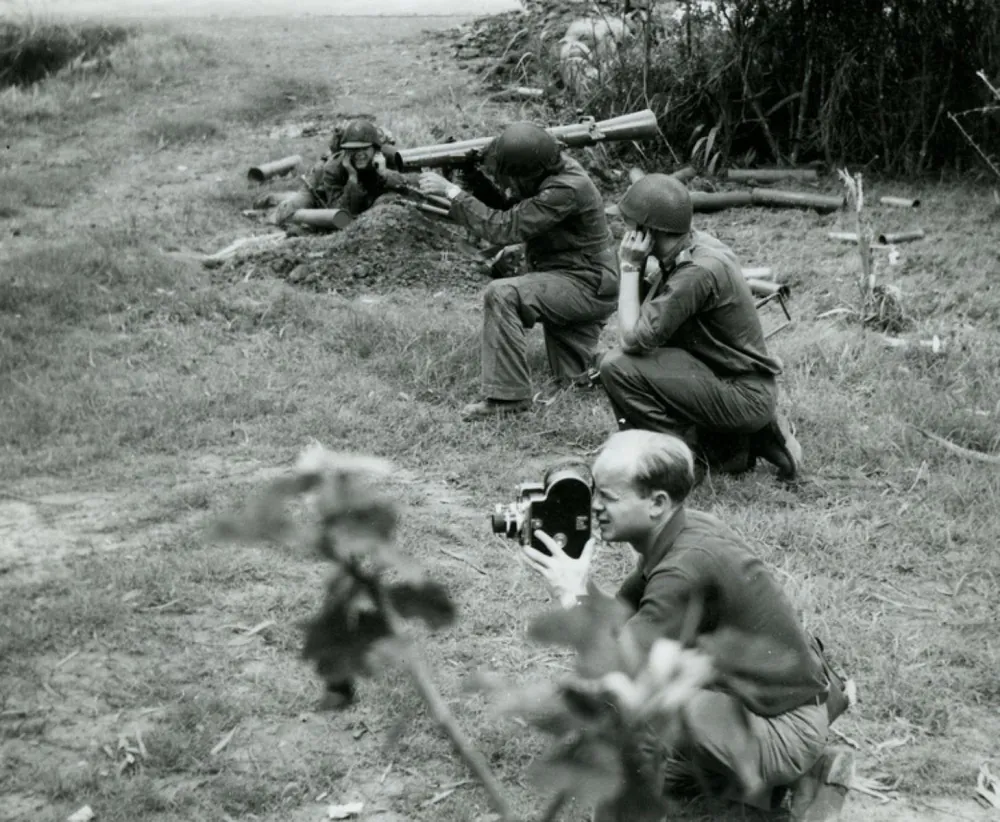
No wonder I mentioned the experience of World War II, because when creating Carl Gustaf, this invaluable experience of using weapons in real combat conditions was, of course, taken into account. Moreover, the Carl Gustaf grenade launcher was based on the 20-mm Pansarvärnsgevär M/42 anti-tank rifle of 1940-1942, which was too low in effectiveness against tanks.
Swedish answer to Bazooka and Panzerschreck, the Carl Gustaf M1
The biggest benefits? Low price and light weight, as well as universal ammunition. This is how this Swedish grenade launcher can be briefly described.
The 84 mm Carl-Gustaf M1 recoilless grenade launcher entered service with the Swedish Army in 1948 as the Grg M/48. It performed the same function as the German Panzerschreck or the American Army Bazooka, but differed significantly from them in that it used rifled barrels instead of smoothbore barrels, which significantly increased the initial velocity of the grenade and achieved much greater range and accuracy. Despite the need to use a special type of ammunition (without fins used to stabilize the flight), this grenade launcher has spread around the world, becoming the basis of anti-tank weaponry in many countries.

The Grg m/48 was also more powerful than the aforementioned counterparts from other countries, as the recoilless firing system made it possible to use munitions containing much more fuel. Due to this, the projectile fired from the Carl Gustav grenade launcher reached a speed of 290 m/s, instead of about 105 m/s, as in the Bazooka or Panzerschreck grenade launchers. This improved the overall accuracy, but in general it was still difficult to call this weapon too impressive. However, in 1964 a modified version of the M2 was developed, which was reduced in weight and length, 14.2 kg and 1.13 meters, respectively, but the shooting range did not change – 700 meters for static targets and 400 meters for mobile targets.
Read also: Weapons of Ukrainian Victory: Review of Starstreak MPADS
Improvement of Carl-Gustaf – from M1 and M2 to M3 and M4
Currently, the most common Carl Gustaf grenade launcher in service is the M3 version, developed in 1991, it has received a reduced weight from 14.2 kg to 8.5 kg and length of 1.13 to 1.065 meters. This makes it much easier to maintain a rate of fire of 6 shots per minute. This was done by abandoning the forged steel barrel in favor of carbon fiber. In addition, the outer metal parts were replaced with plastics and aluminum alloys.

In this version, the grenade launcher can use different types of projectiles, such as high-explosive HE 441, cumulative HE 441, cumulative HEAT/751, HEAT-RAP/551 or fragmentation anti-tank HEDP/502, used to combat vehicles, fortifications and manpower. This greatly increased the capabilities of these Swedish grenade launchers, which could now hit more protected armored targets (with an armor thickness of up to 400 mm) at a distance of up to 700 meters (effective range of HEAT 551 for stationary targets).
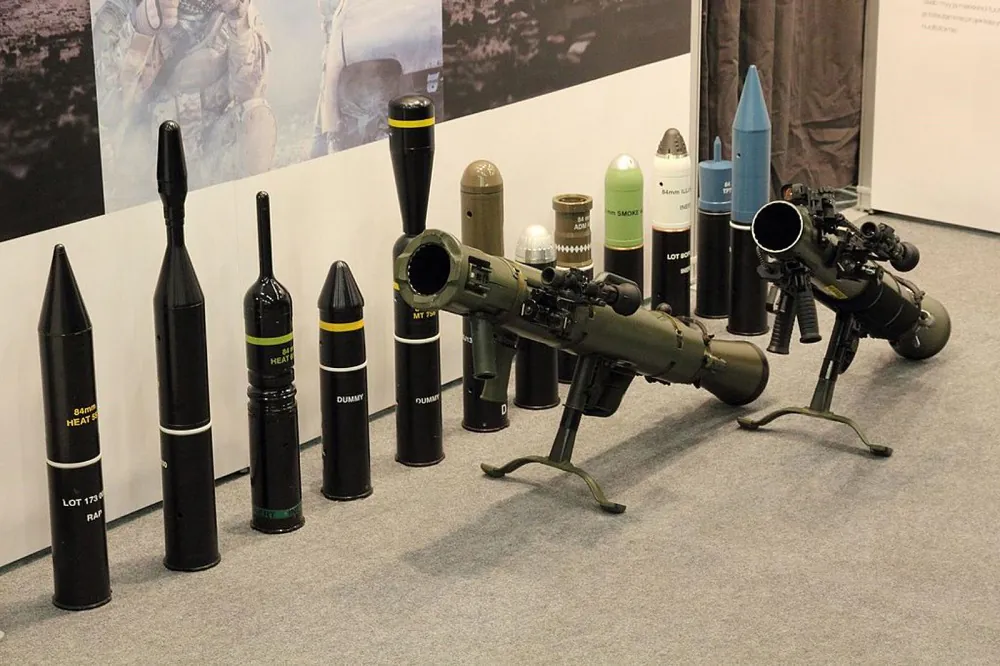
Of course, this is not such a long distance, compared to systems such as Javelin or Stugna, but it should be noted that this is not an ATGM, but much simpler grenade launchers without a guidance system. In general, the most common ammunition for Carl Gustaf grenade launchers are designed to hit targets, usually within a few hundred meters. However, more impressive shells, with laser guidance with a maximum range of up to 2000 m and an effective range of up to 1000 m, have long existed. It is also known that work is already underway on new high-precision projectiles GMM (Guided Multipurpose Munition) with a warhead capable of destroying bunkers and lightly armored targets at a range of up to 2500 km.

Currently, the last version of this grenade launcher is the M4 version, introduced in 2014, which has an even reduced weight (6.6 kg) and system length (950 mm) due to additional use of carbon fiber and titanium parts. At the same time, it has increased durability of launchers from 500 to 1,000 shots, received Picatinny rails and equipment for control of programmable projectiles. However, this version did not reach Ukraine, as Canada only had access to the M3.
Read also: Weapons of Ukrainian victory: What do we know about NLAW?
How do Carl Gustaf RPGs work?
In fact, it’s a fairly simple weapon, consisting of a rifled barrel topped with a Venturi recoil muffler, two front handles and a shoulder handle. Aiming is carried out by optical equipment with triple zoom with a viewing angle of 17º. The most modern versions are equipped with the Swedish aiming system Aimpoint, and their use usually requires a team of two people (shooter and loader), although these weapons can be used independently for shooting from any position. However, you need to make sure that there is no one behind, even 75 meters away, because thanks to the recoilless design, each shot creates excessive pressure, which can seriously harm the people behind it.
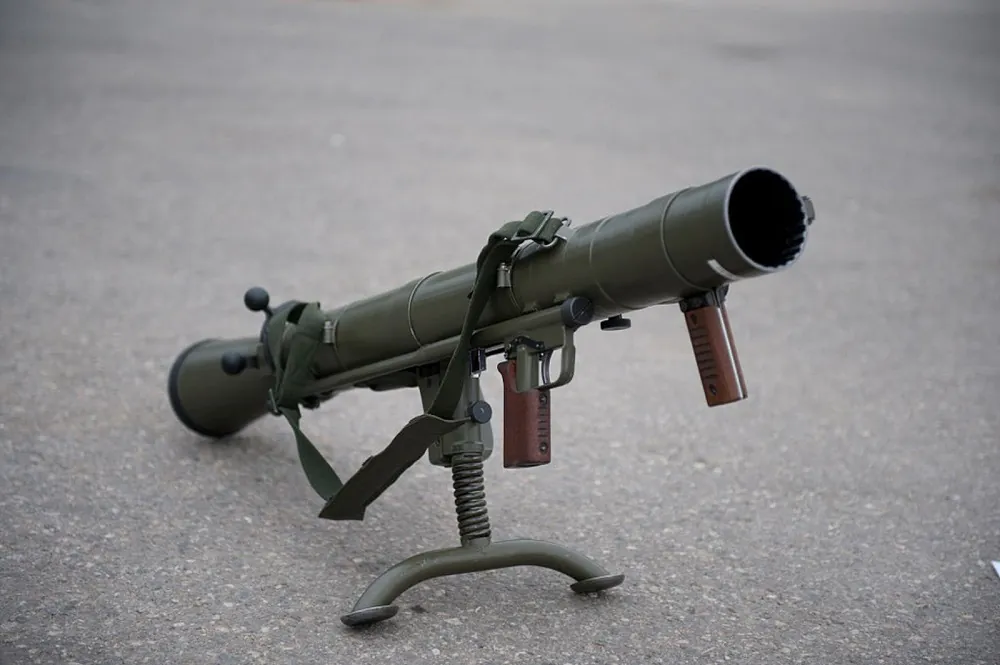
Thanks to the use of modern plastic components, especially on the outside of the barrel, Carl Gustaf is a relatively light grenade launcher, as for recoilless construction. Of course, the mass itself is quite large compared to other modern anti-tank grenade launchers used in Europe, but the design itself suggests that it can be used with a very wide range of ammunition.
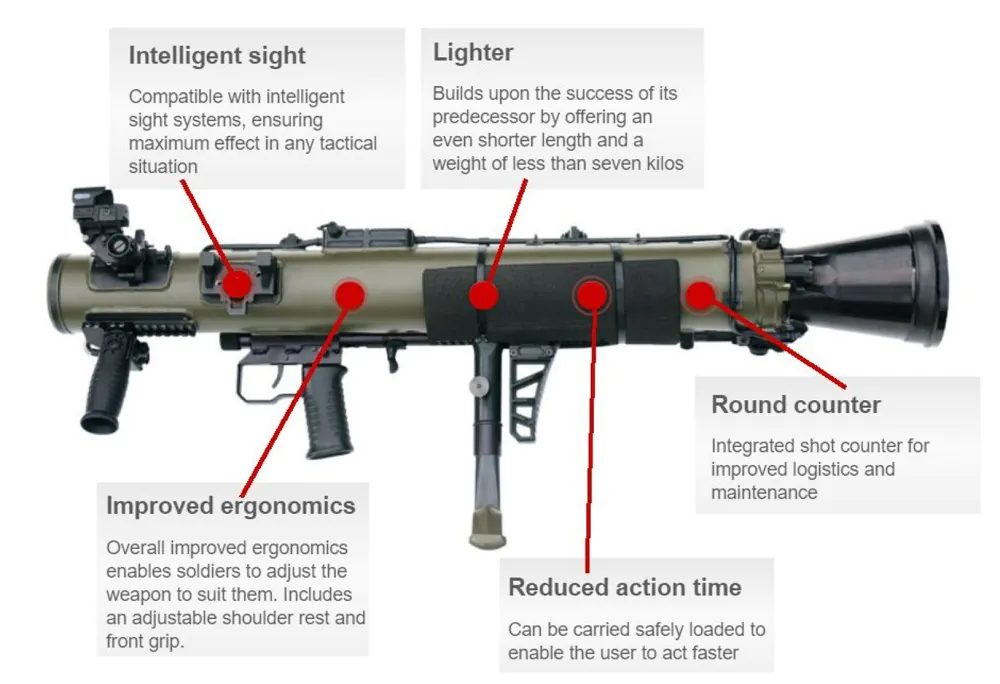
For example, the modified version currently used in Ukraine can work with 10 different projectiles. Thanks to the corrugated steel shell inside the barrel of the weapon, the projectiles are stabilized during rotation, in contrast to armor-piercing HEAT projectiles. The grenade launcher itself is charged from behind, and its lock opens to the side. Despite the significant difference in basic design compared to some other grenade launchers, from a tactical point of view, Carl-Gustaf plays almost the same role as lighter anti-tank grenade launchers on the battlefield.
Read also: Weapons of Ukrainian victory: ATGM Javelin FGM-148 – ruthless to enemy tanks
What projectiles are used by Carl Gustaf?
The Carl Gustaf system is capable of firing a variety of 84 mm ammunition, including anti-armor, anti-structural, multi-purpose, anti-personnel and auxiliary projectiles. HEAT (high-explosive anti-tank) munitions can pierce up to 400 mm of rolled homogeneous armor.
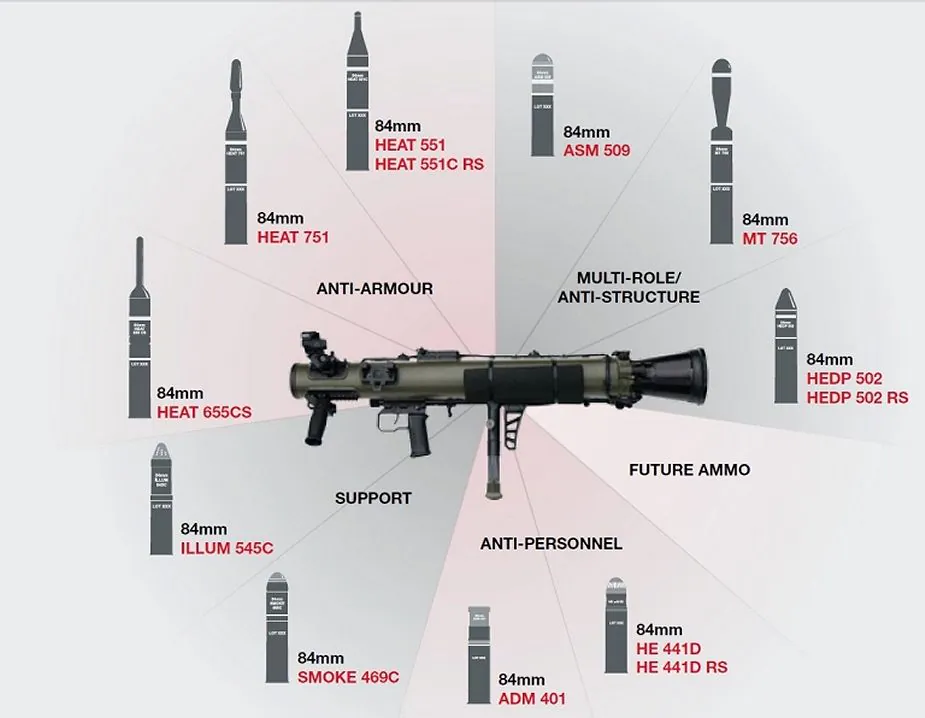
Projectiles with tandem HEAT warhead are capable of piercing up to 500 mm of rolled homogeneous armor behind explosive jet armor. The rate of fire is about 6 shots per minute. Ammunition has an effective range of up to 400 m against tanks and 700 m against buildings and stationary targets. Some types of ammunition have a rocket accelerator to increase the range to 1000 m.
Read also: ‘Neptunes’ knocked out ‘Moskva’ cruiser: All about these anti-ship cruise missiles
Equipment of Carl Gustaf RPGs
The sight is mounted on a Picatinny rail, which allows you to use different types of sights, including thermal or image amplifiers designed for night combat. Saab has developed the Carl-Gustaf M4 for open compatibility with a range of smart sights, ensuring that the system remains at the forefront of military technology innovation. The use of intelligent sighting systems allows you to instantly analyze situational data, allowing the user to essentially program ammunition to achieve the desired effect. This future synergy between the round, the system and the individual is one of the next crucial strategic steps that the advanced military must take.
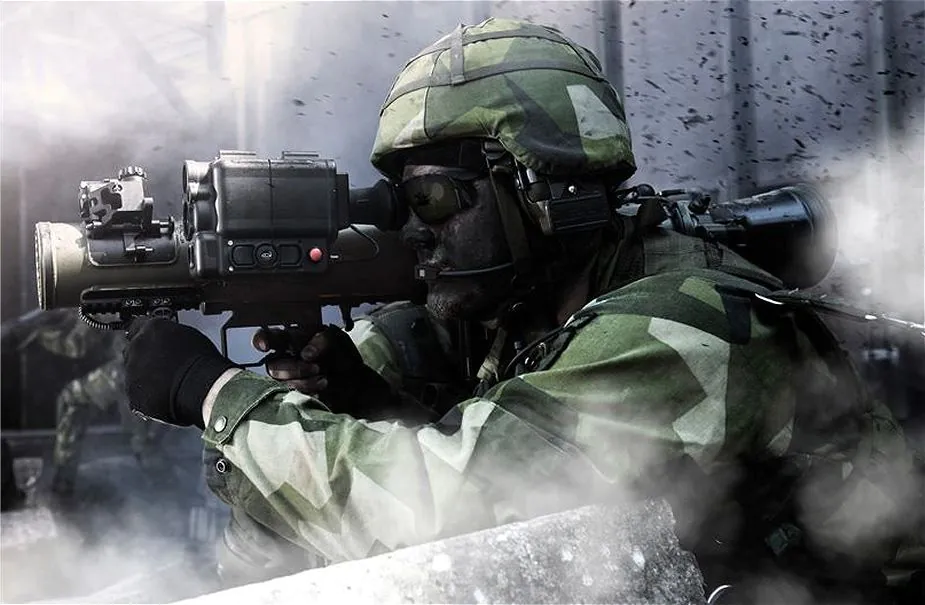
Carl Gustaf M4 was specially designed to destroy main battle tanks, armored vehicles, as well as buildings and bunkers. It has an effective range of up to 500 m on armored vehicles or tanks and 700 m on buildings and stationary targets. Some types of ammunition have a rocket accelerator to increase the range to 1000 m. CGM4 is usually controlled by a team of two people, including a gunner and a loader.
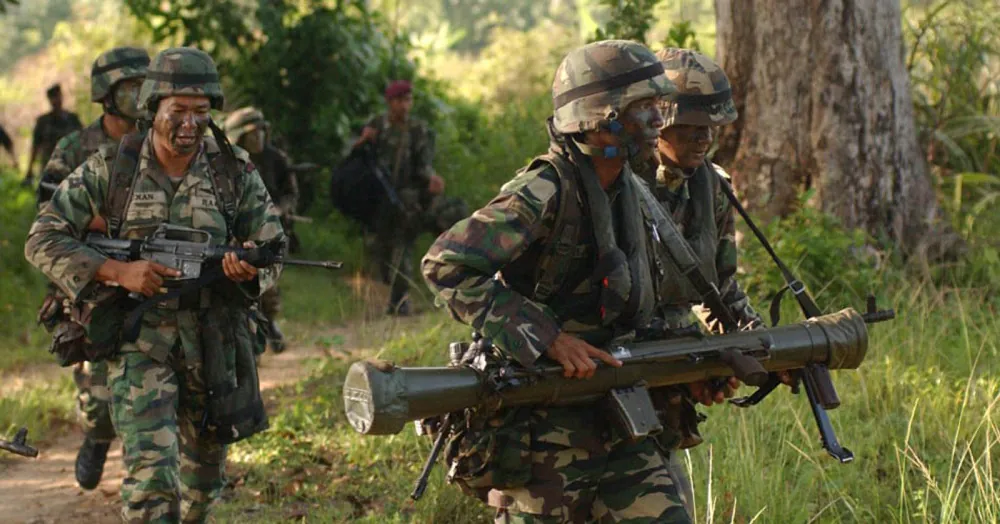
This allows them to deal with the wide range of combat tasks they face and have a powerful solution for any situation. Having a single weapon for all situations increases their tactical flexibility and reduces the amount of equipment they carry. The CGM4 can be transported when loaded, allowing users to respond more quickly to threats and move tactically when needed. The interface informs exactly how many shots were fired through it, so that the military can accurately estimate when a particular weapon reaches the end of its life cycle.
Read also: Weapons of Ukrainian victory: The military praise the Piorun MPADS
Specifications of Carl Gustaf
- Weight: 14,2 kg (M2); 8,5 kg (M3); 7,0 kg (M4)
- Length: 1,13 m (M2); 1,07 m (M3); 1,0 m (M4)
- Crew: 2 people (gunner and loader)
- Projectile type: 84×246-mm R reactive cumulative grenade
- Caliber: 84 mm
- Combat rate of fire: 6 shots per minute
- Muzzle velocity: ~ 310 m/s (FFV65), ~ 290 m/s (FFV551), ~ 240 m/s (FFV502)
- Effective firing range: 250—300 m at a moving target, 500 m (FFV65) and 700 m (FFV551) at a stationary target, up to 1000 m at troops in the open, up to 1300 m with smoke greande, up to 2300 m with illuminating grenade
- Maximum firing range: 1 000 m
- Sight: laser rangefinder, night vision.
The Swedish grenade launcher Carl Gustaf has proved itself very well in the conditions of hostilities in Ukraine. Our defenders successfully use it against tanks and armored vehicles of the occupiers. Even the newest ‘unmatched’ Russian tank T-90M Breakthrough could not withstand these weapons of Swedish production.
Every such accurate shot, every destroyed tank brings our Victory closer. And it will definitely come! Glory to Ukraine! Death to enemies!
You can also help Ukraine fight with Russian occupants via Savelife or via an official page of the National Bank of Ukraine.
Read also:
- All about the 155mm M777 howitzer and M982 Excalibur guided projectile
- Weapons of Ukrainian Victory: the French Caesar self-propelled howitzer
- Weapons of Ukrainian victory: ATGM Stugna-P – Russian tanks are in trouble
- Weapons of Ukrainian victory: Anti-aircraft weapons that protect our skies

